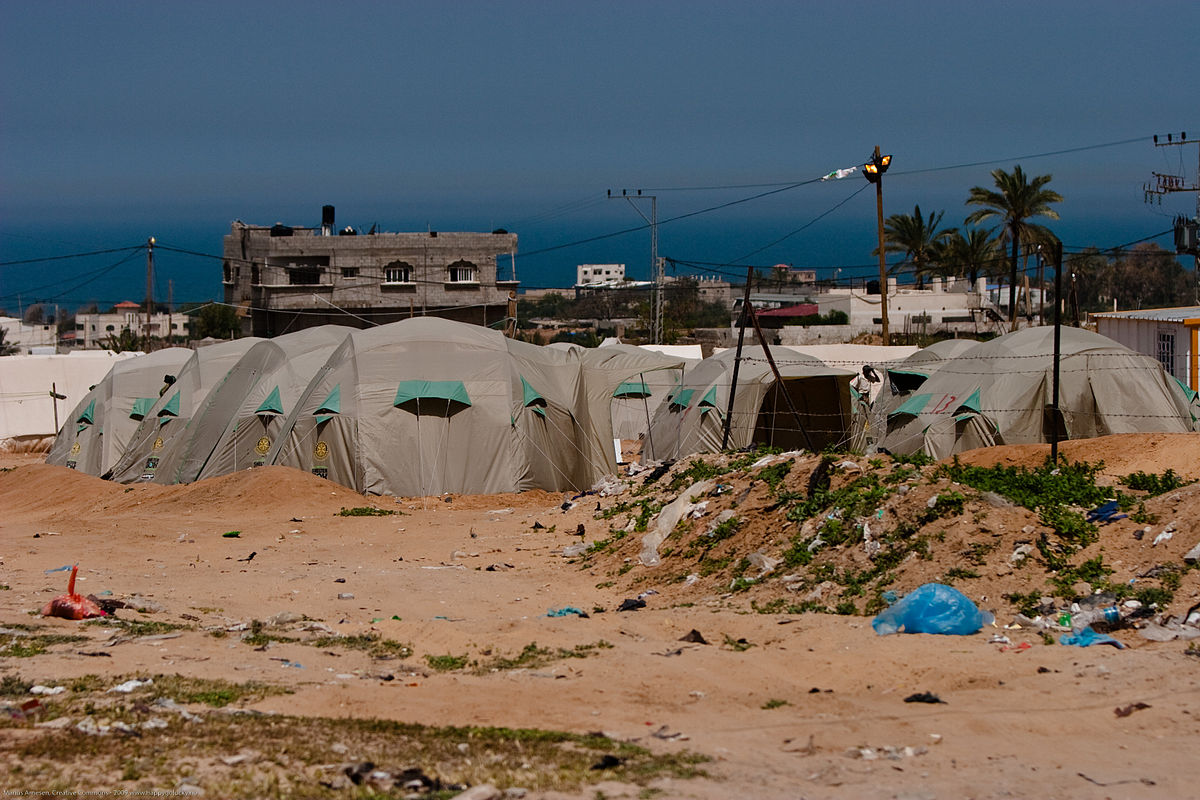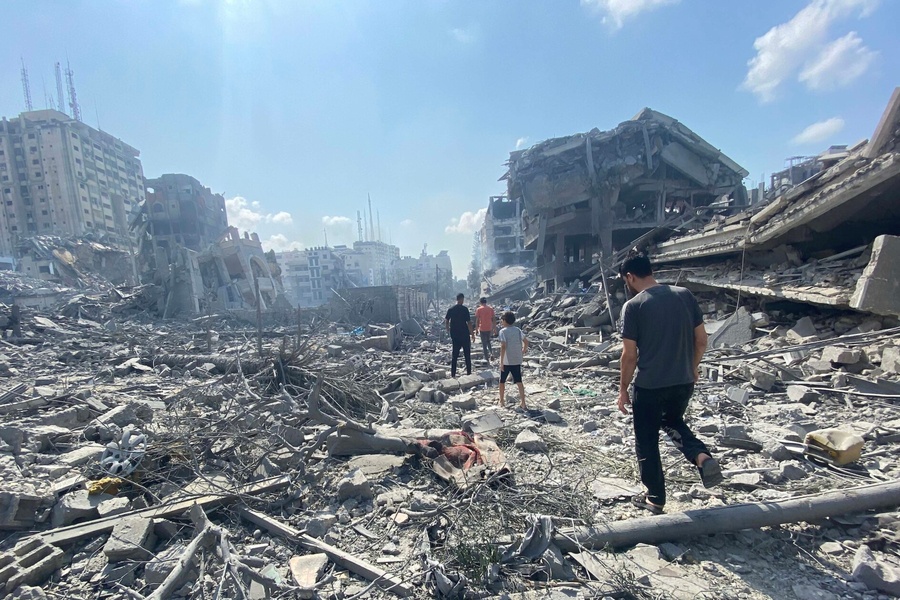A Fourth War With Hamas in Gaza?
The latest round of fighting between Israel and Hamas in Gaza is only the most recent exchange that the Israeli military and other observers worry could escalate into war.

Published by The Lawfare Institute
in Cooperation With

The latest round of fighting between Israel and Hamas in Gaza is only the most recent exchange that the Israeli military and other observers worry could escalate into war. Israel clashed with Hamas in Gaza in 2008–09, 2012 and 2014, losing almost 100 soldiers and civilians and inflicting more than 3,000 deaths in response to Hamas rocket attacks and other provocations. Many of the Palestinian dead were members of Hamas, but many were civilians, with the balance being hotly disputed. Between 2014 and 2018, Israel regularly bombed Gaza to stop rocket attacks and punish Hamas. The Israeli military calls these operations the “campaign between the wars.” As Palestinian political scientist Ghassan Khatib warns, “The situation in Gaza is unsustainable. It has to explode in one way or another.”
An explosion may not occur, however—and if it does, it is likely to be muffled. Hamas has little means to challenge Israel directly, and its indirect methods, such as demonstrations and flaming kites, reap few lasting rewards. Hamas is failing at governance, and it is diplomatically isolated. It derives political strength largely from a dynamic outside of its control: Alternative and more peaceful Palestinian voices are even more discredited. Hamas may again try to attack Israel, but the result is likely to be a punishing Israeli response that leads to a brief international outcry but no change that benefits Hamas.
Because of the many restrictions on Gaza, Hamas cannot display its greater administrative competence relative to the Palestinian Authority. It is this weakness that risks renewed conflict. Both Egypt and Israel impose a tight blockade, and the Palestinian Authority (PA) has used its control over much of the money going to the Palestinian community to undermine Hamas. The PA also has assumed control of Gaza’s border crossing, depriving Hamas of the taxes it once collected at the terminals. The Trump administration cut funding to the U.N. Relief and Works Agency, which provides food support for many Gazans. Power lackouts are common in Gaza, and unemployment hovers around 60 percent. Although Hamas faces no real challenge to its rule in Gaza, it also strives to distinguish itself from Fatah through its ability to govern and its willingness to fight Israel. And it is failing on both these fronts. In 2012 and 2014, Hamas sought to use a confrontation with Israel to grab world attention and ensure its resistance credentials, and its weak political position provides incentive to do so again.
Hamas, however, has yet to come up with a winning strategy against Israel. Although Hamas’s rhetoric remains hostile, the success of Israel’s missile-defense system prevents Hamas from harassing Israel with indiscriminate but inaccurate rocket attacks, as it has in the past. Israel’s destruction of parts of Gaza in the various wars and bombing campaigns exacerbates the misery of Gazans with little for Hamas to show in return. In April, Hamas tried a new approach: encouraging and co-opting the “March of Return.” Hamas mixed its operatives with Palestinian civilians and encouraged women and children to penetrate the security barrier surrounding Gaza.
The march briefly drew the world’s eye back to Gaza and succeeded in generating outrage against Israel, particularly after Israeli snipers killed more than 100 unarmed Palestinians to stop the barrier from being breached. Hamas also shot an Israeli border guard in July and, along with occasional shootings or bombings, launched flaming kites from Gaza in an attempt to have them land in Israeli fields and set them aflame. Hamas won the March of Return from a public relations perspective by drawing attention to the plight of civilians in Gaza and Israel’s forceful reaction, but any glow from this political victory quickly faded and there was a quick return to the status quo. In addition, the West Bank did not erupt in protest simultaneously, with its residents remaining “quiet bystanders” amid the Hamas-Fatah political disjuncture. Perhaps the more enduring aspect of the march and associated measures will be the continued use of women and children, mass mobilization, and development of low-tech efforts to gain global attention.
Indeed, the choice of a less violent approach than rocket fire shows Hamas’s limits. In contrast to 2014, Hamas fears it cannot instigate another full-on war with Israel, particularly as doing so is likely to result in widespread destruction in Gaza at little cost to the Israelis. Some analysts argue that Hamas is more receptive than ever to a longtime truce with Israel that would open up Gaza economically and allow Hamas to rule, in exchange for an end to its attacks.
In addition to its poor military options, Hamas is also diplomatically isolated. Hamas had hoped that the Muslim Brotherhood government that ran Egypt from 2011 until a coup in 2013 would ease economic pressure. This never really happened, and Egypt’s post-coup leader, Abdel Fattah el-Sisi, has proved a bitter enemy. Egypt regularly closes the Rafah border crossing, reinstated arrests of Palestinians in Egypt, and cracked down on the movement of arms and militants between the Sinai and Gaza. Saudi Arabia and the United Arab Emirates are also on a vendetta against anything that smacks of the Muslim Brotherhood, which includes Hamas, because of its Muslim Brotherhood origins and ties.
Even Hamas’s relationship with Iran has been bumpy. Iran has trained Hamas operatives since the 1990s, and over time it has provided Hamas with a wide range of weapons and transferred technological know-how to allow the group to develop its own missile capacity in Gaza. In addition, after Hamas won elections in Gaza in 2006, Iran provided it with tens of millions of dollars, enabling it to manage the sudden and heavy burden of governance. But the wars in Syria and in Yemen (where Hamas and Iran back opposite sides) have frayed relations, leading Iran to dramatically curtail its support for Hamas.
Nonetheless, Iran values its relationship with Hamas and has long played up the Palestinian cause in its rhetoric. Its ties to the Sunni Hamas give Iran credibility as an “Islamic” power, as opposed to as a Shiite one. When Israel went to war in Gaza in 2012 and 2014, Iran increased its aid, despite tension over Syria. Yet, as in much of the Arab world, in Iran there is Palestinian issue fatigue as other domestic issues, such as Iran’s dire economic crisis rise in importance. For now, Iran and Hamas appear to have reached a modus vivendi, and with Syria winding down, this may get stronger. Iran resumed aid to Gaza in May 2017, following a change in Hamas’s leadership.
Ironically, Hamas and Israel both have the same answer to Gaza’s troubles—the Palestinian Authority—albeit with vastly different caveats. From Israel’s perspective, if the PA took control of Gaza it could be a peaceful alternative to Hamas and an acceptable channel for international aid. Hamas, for its part, recognizes that it cannot govern Gaza given all the pressure and isolation it faces. It thus remains eager to pass this burden off to the PA.
However, Hamas will not surrender its weapons, as Israel and the United States demand, for two main reasons. First, Hamas considers itself an anti-Israel “resistance” movement, and pursuing a conciliatory posture would undermine its credentials. Second, given past experience, Hamas leadership fears that the PA would arrest and torture Hamas members. The PA brutalized Hamas when it controlled Gaza before 2007—treatment Hamas remembers and has in turn meted out to Fatah representatives in the Strip. Hamas and Fatah have at times reconciled, but any amity is usually quickly disrupted. The Palestinian Authority does not want Hamas to get back on its feet and recognizes that trying to bring prosperity to Gaza is a losing proposition in this regard. Israel increasingly recognizes that the PA will not be the solution to the Gaza dilemma.
Going back to the status quo is a time-honored response to a flare-up, but this answer is far more acceptable for Israel than for Hamas. Because it can live more easily with the status quo, Israel often demands that Hamas disarm, release Israeli prisoners without making releases of its own, or otherwise puts conditions on more comprehensive deals that it knows Hamas will not accept.
At a tactical level, Israel needs to do a better job preparing for less-violent strategies such as the March of Return. This may involve developing (and using) more non- and less-than-lethal weapons to counter flaming kites and demonstrators charging the barrier. The Trump administration may tolerate Israel killing 100 Palestinian civilians, but other U.S. administrations are less likely to do so, particularly if Israel continues to throw its lot in with the Republican Party.
Israel, however, must be wary of pushing Hamas too close to the brink. As Israeli security analyst Gabi Siboni points out, “If Israel collapses the Hamas regime, what comes after? Every alternative is awful.” Israel hopes to keep Hamas weak but Gaza stable, a balancing act that may prove elusive.
The biggest step Israel could take, and the one least likely to happen, is to try to restore some political credibility to pro-peace voices among Palestinians. The greatest source of Hamas’s strength is the political weakness of the PA, and this weakness is likely to grow as the leadership fragments and peace talks wither from a hope to a pipedream. Serious measures on settlements and on peace negotiations to show that peace generates positive results for the Palestinians would serve Israel well in the long term.
The United States, for its part, would ideally restrain Israel from self-defeating behavior regarding Gaza and the Palestinian cause in general. Sensible policies, however, may not return for many years, and in the meantime the outlook for Gaza is bleak.





